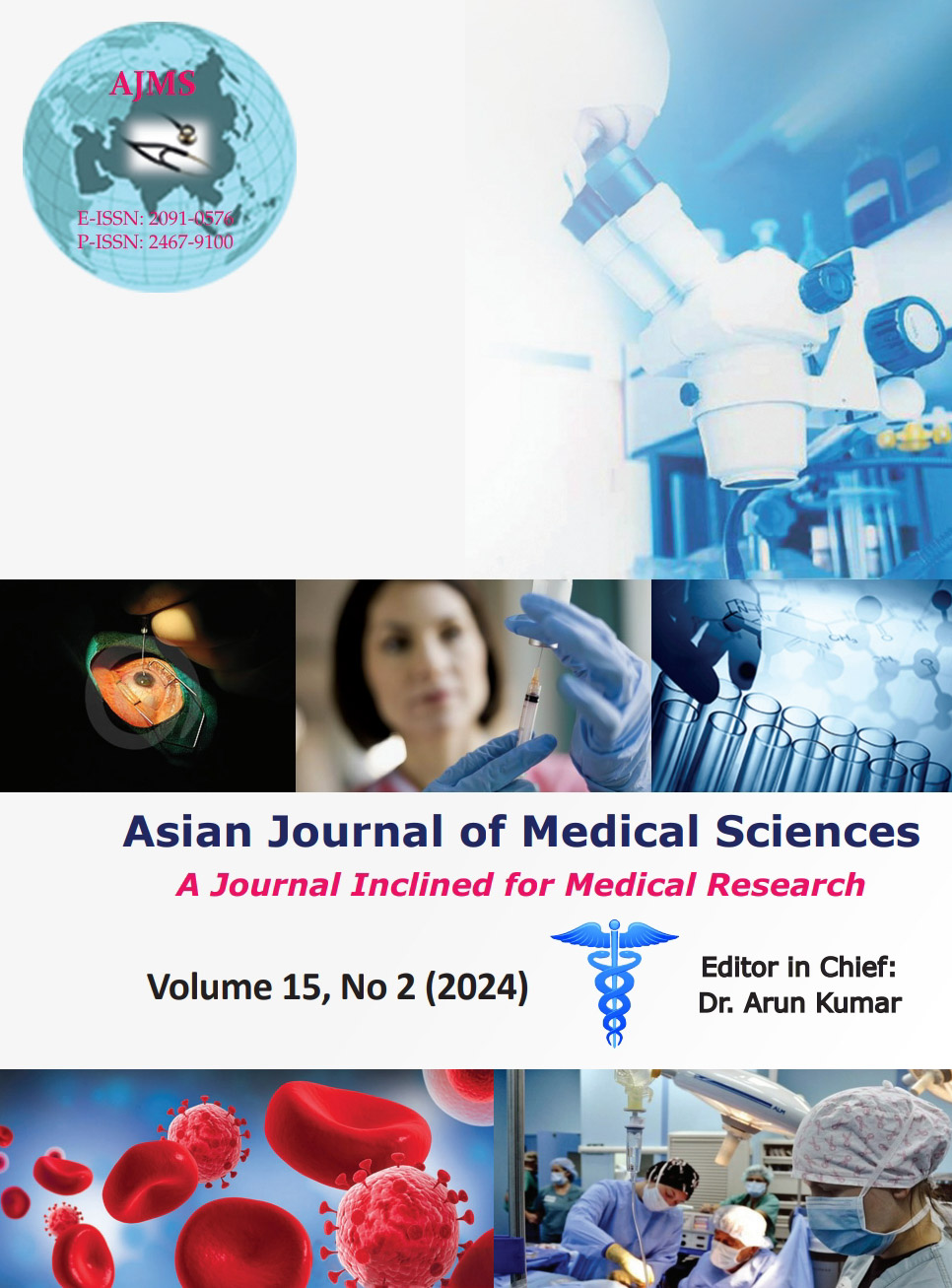Antimicrobial susceptibility pattern and mupirocin resistance among methicillin-resistant Staphylococcus aureus isolated from skin and soft-tissue infection patients attending a tertiary care hospital in North India
Keywords:
Methicillin-resistant Staphylococcus aureus; Antibiotic susceptibility; Mupirocin resistance; North IndiaAbstract
Background: Antimicrobial susceptibility among bacterial isolates varies from center to center. Mupirocin is a topical antibacterial antibiotic used to treat wound infections caused by methicillin-resistant Staphylococcus aureus (MRSA).
Aim and Objectives: This study was conducted to know the prevalence of high and low levels of mupirocin resistance along with antimicrobial susceptibility in MRSA isolates from skin and soft-tissue infection in patients admitted to a tertiary care hospital in North India.
Materials and Methods: A total of 97 non-repetitive isolates of MRSA from various pus samples over a period of 1 year were included in this study. These strains were identified as per standard laboratory protocols given by the Clinical Laboratory Standards Institute. High- and low-level mupirocin resistance of the isolates was tested by using mupirocin discs of 200 μg and 5 μg, respectively. Mupirocin strips of 256 μg and 512 μg were used for the E-test to detect low-level and high-level mupirocin resistance, respectively. The isolates were reported as sensitive to mupirocin, with minimum inhibitory concentrations of <4 mg/L.
Results: Overall, 9.27% of mupirocin resistance was found, of which 2.06% of isolates were high-level resistant to mupirocin, while 7.21% had low-level resistance. All MRSA strains were susceptible to vancomycin, followed by linezolid (94.84%), teicoplanin (91.75%), and fusidic acid (88.65%).
Conclusion: Regular monitoring, good infection control practices, and proper awareness about utilizing mupirocin therapeutically and prophylactically may help prevent the emergence of mupirocin resistance in health-care facilities.
Downloads
Downloads
Published
How to Cite
Issue
Section
License
Copyright (c) 2023 Asian Journal of Medical Sciences

This work is licensed under a Creative Commons Attribution-NonCommercial 4.0 International License.
Authors who publish with this journal agree to the following terms:
- The journal holds copyright and publishes the work under a Creative Commons CC-BY-NC license that permits use, distribution and reprduction in any medium, provided the original work is properly cited and is not used for commercial purposes. The journal should be recognised as the original publisher of this work.
- Authors are able to enter into separate, additional contractual arrangements for the non-exclusive distribution of the journal's published version of the work (e.g., post it to an institutional repository or publish it in a book), with an acknowledgement of its initial publication in this journal.
- Authors are permitted and encouraged to post their work online (e.g., in institutional repositories or on their website) prior to and during the submission process, as it can lead to productive exchanges, as well as earlier and greater citation of published work (See The Effect of Open Access).




